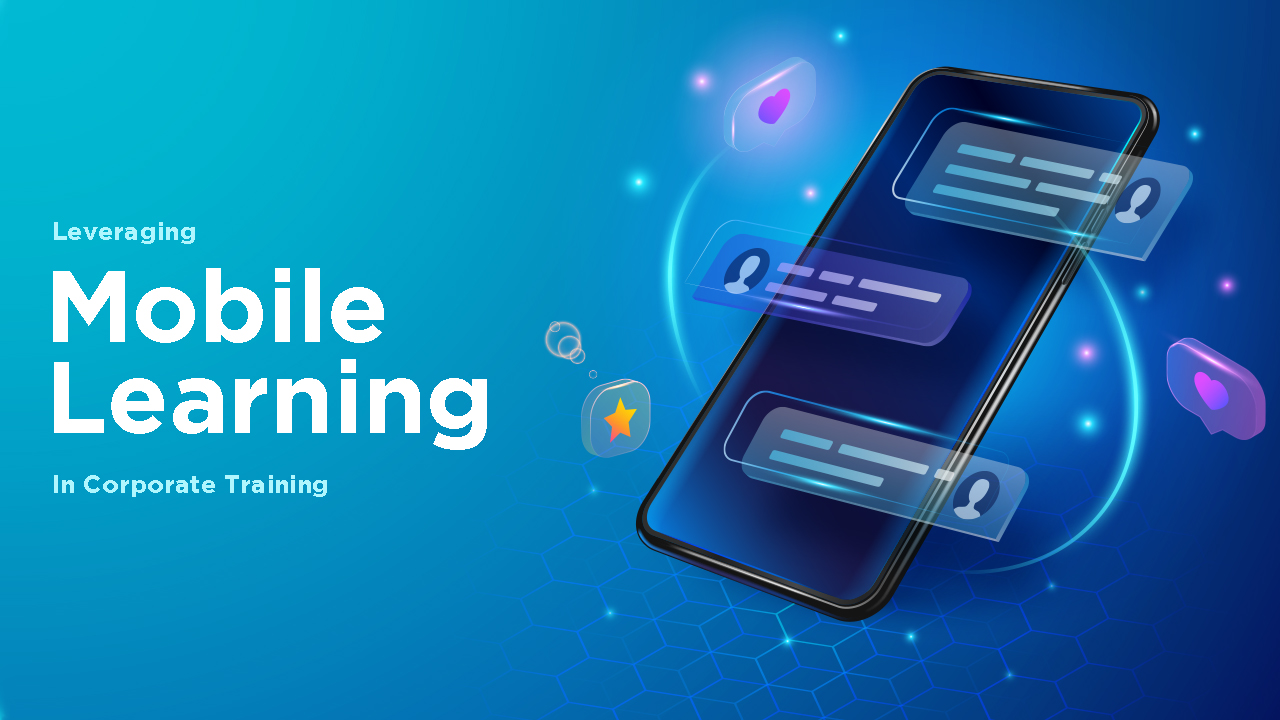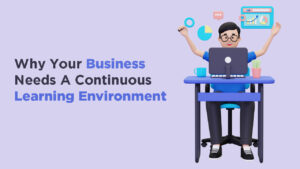In today’s digital era, technology has revolutionized corporate training, making learning more accessible, engaging, and effective. The widespread adoption of smartphones and digital platforms has transformed how employees acquire knowledge, enabling anytime, anywhere learning as the new standard.
For many professionals, lack of growth and development opportunities is a key reason for leaving their jobs. To address this, organizations must prioritize robust training and development programs. Mobile learning (mLearning) has emerged as a powerful solution, allowing companies to deliver flexible, interactive, and on-demand training that enhances knowledge retention and boosts employee performance.
With organizations across industries increasingly shifting to a mobile-first training approach, integrating mobile learning into corporate training programs is no longer optional—it is essential.
Key Benefits of Mobile Learning in Corporate Training
1. Just-in-Time Learning Support
Employees today expect instant access to critical information at their fingertips. Mobile learning delivers short, focused courses that provide real-time, up-to-date information, enabling employees to perform tasks more efficiently and avoid errors caused by outdated knowledge.
For professionals who frequently travel, offline access to training materials ensures uninterrupted learning, making it easier to stay informed and prepared—even without an internet connection.
2. Enhanced Collaboration & Knowledge Sharing
Building a strong learning culture is essential for organizational success. Mobile learning fosters collaborative learning environments, allowing employees to connect with peers, managers, and mentors. Features such as discussion forums and interactive platforms promote knowledge exchange and engagement, ensuring a more dynamic and connected learning experience.
3. Continuous & Self-Directed Learning
Employees learn at different paces, and mobile learning supports personalized, self-directed learning experiences. By allowing learners to access training anytime and progress at their own pace, organizations empower employees to take ownership of their professional development.
Additionally, multi-device accessibility ensures that employees can seamlessly switch between devices, reinforcing learning and encouraging continuous engagement. This flexibility aligns with modern work schedules and enhances overall performance and job satisfaction.
4. Higher Knowledge Retention Rates
Mobile learning delivers bite-sized, digestible content, making it easier for employees to retain and apply knowledge effectively. Breaking down complex topics into short, focused modules enhances comprehension and long-term retention.
Shorter, on-demand learning experiences allow employees to reinforce knowledge quickly, reducing overall training time while improving competency and performance.
5. Cost-Effective & Scalable Training Solutions
Mobile learning reduces training costs by leveraging existing mobile devices and eliminating the need for in-person sessions or printed materials. Organizations save time and resources by deploying training content instantly across multiple locations, ensuring global workforce alignment.
Additionally, mobile learning platforms allow organizations to update and refresh content effortlessly, keeping training materials relevant and aligned with evolving business needs.
Mobile Learning Strategies for Effective Corporate Training
1. Gamification for Engagement & Motivation
Gamification elements—such as points, badges, leaderboards, and progress tracking—enhance employee engagement and motivation. Incorporating game mechanics into mobile learning encourages learners to actively participate, fostering a sense of achievement and competition.
Interactive challenges, quizzes, and rewards create a more engaging learning experience, leading to higher course completion rates and improved knowledge retention.
2. Podcasts for On-the-Go Learning
Audio-based learning through podcasts is an efficient way to deliver training content, especially for professionals who prefer learning on the move. Podcasts can be used to share expert insights, leadership messages, and industry trends, allowing employees to consume content anytime, anywhere—whether commuting, exercising, or multitasking.
3. Microlearning for Bite-Sized Knowledge Absorption
Microlearning breaks down large amounts of information into small, focused lessons, making training more digestible and effective. Spaced repetition techniques improve retention, ensuring that learners grasp key concepts quickly and retain them for longer.
When combined with mobile learning, microlearning provides an efficient and time-effective approach to corporate training, allowing employees to stay engaged without disrupting their daily work routines.
4. Video-Based Learning for Higher Engagement
Video content is one of the most effective learning formats, offering a visually engaging and immersive experience. Short, high-impact videos simplify complex concepts and provide real-world examples, making training more relatable and easier to understand.
Organizations can leverage videos for product training, compliance education, onboarding, and leadership development, ensuring employees have access to valuable learning materials whenever needed.
Conclusion
As digital transformation accelerates, mobile learning is becoming a cornerstone of corporate training. With its ability to deliver flexible, cost-effective, and engaging learning experiences, mLearning empowers employees to develop new skills, stay informed, and enhance performance—all on their own terms.
By integrating interactive and mobile-first learning strategies, organizations can create a more agile, motivated, and high-performing workforce, ensuring long-term success in an ever-evolving business landscape.
The future of corporate training is mobile—is your organization ready to embrace it?
Get smarter responses, upload files and images, and more.






